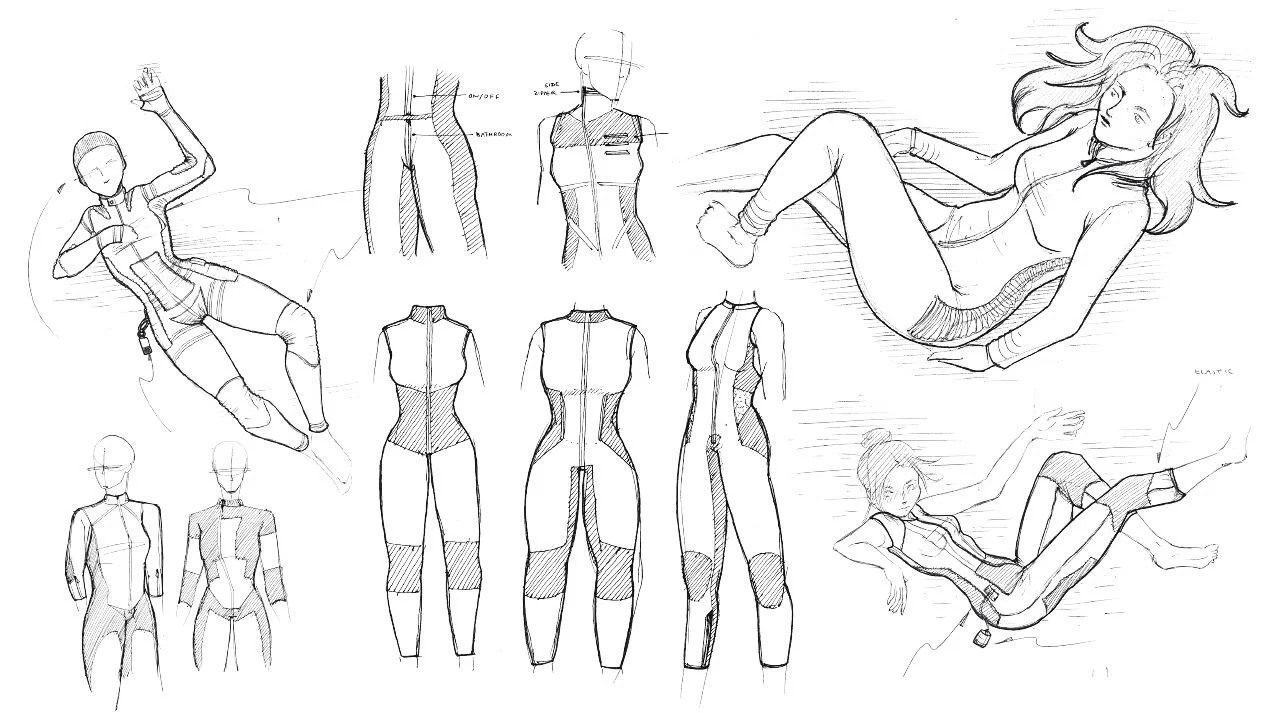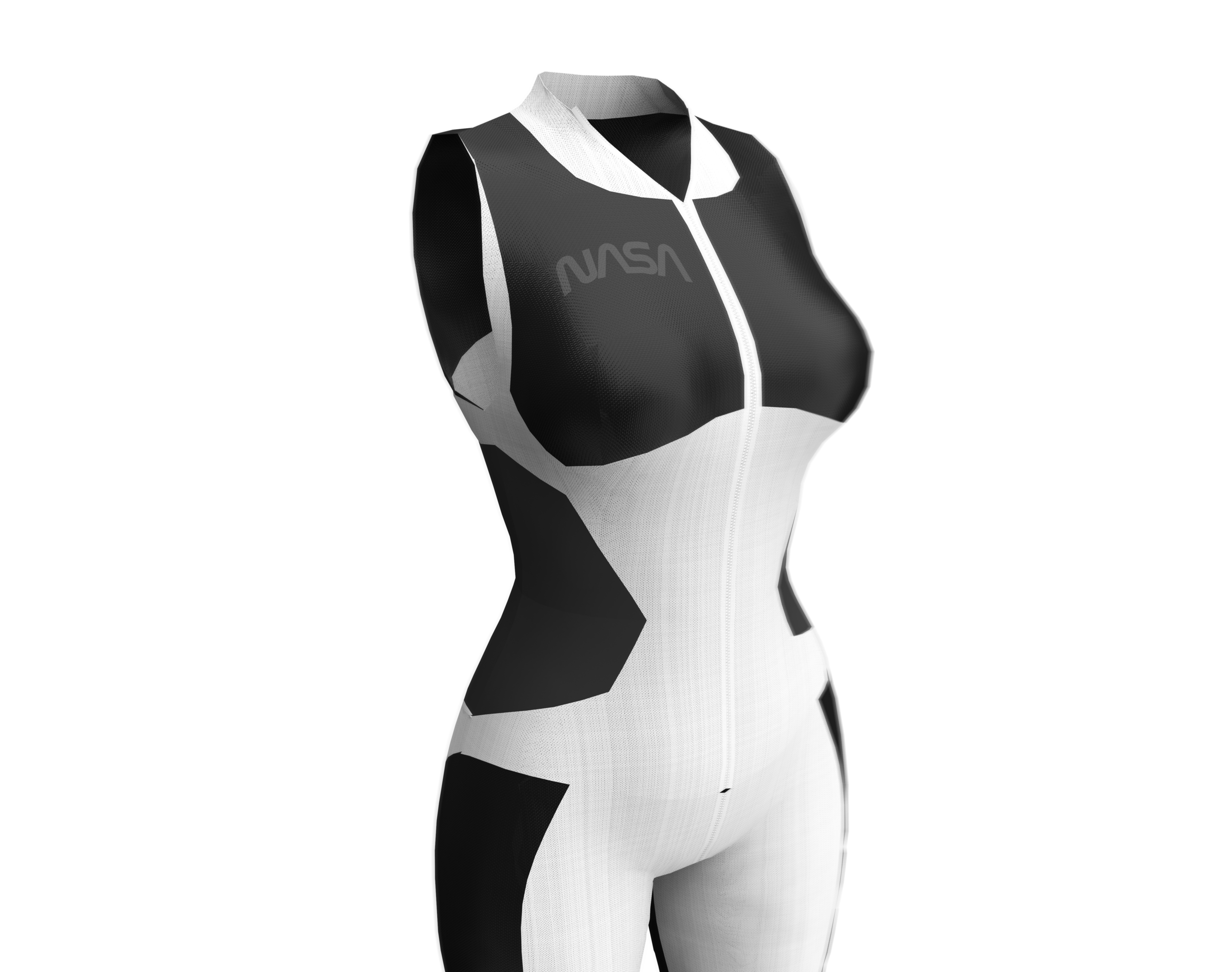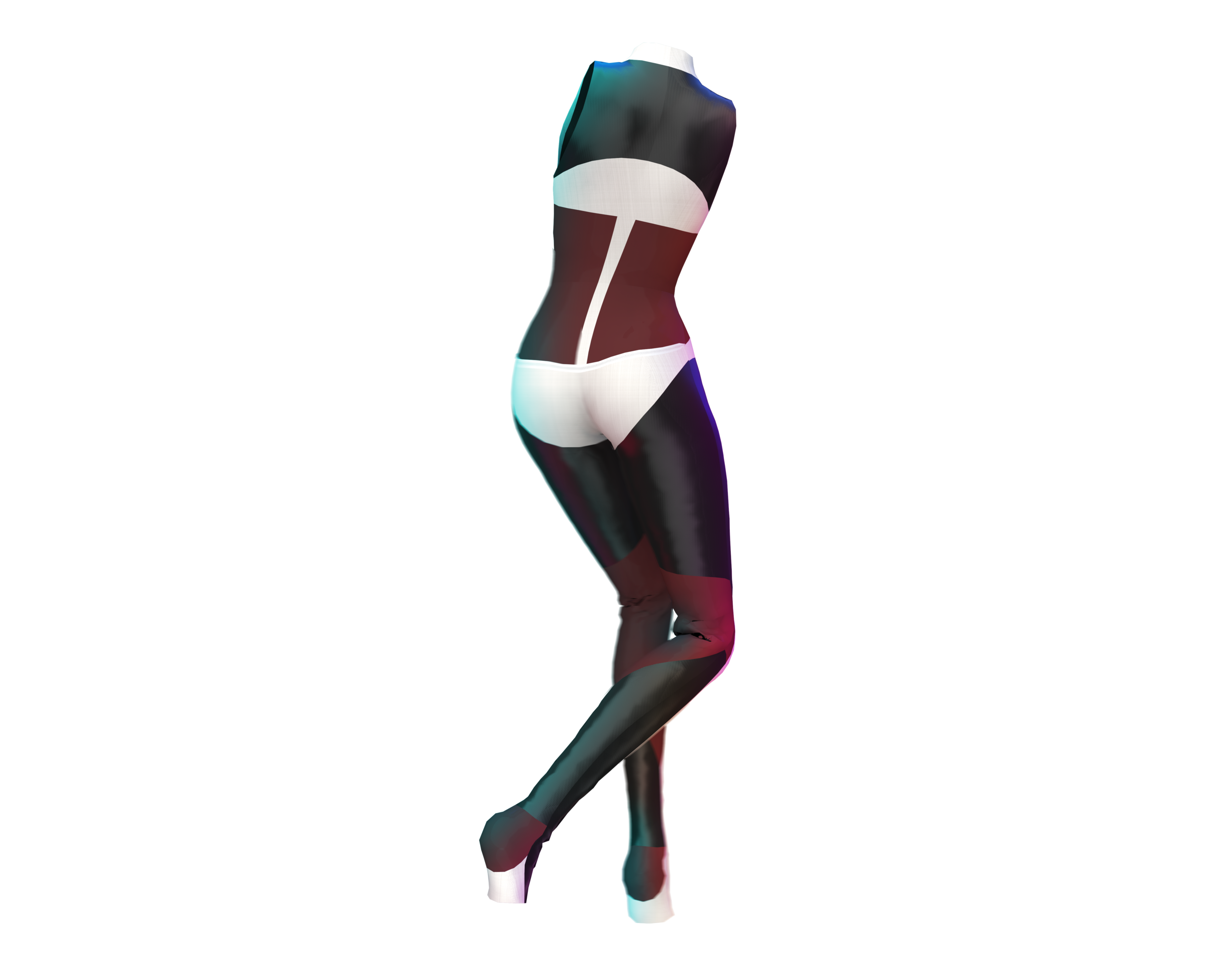
A supplementary garment that aids in the reconstruction of muscle and bone in microgravity environments.
Astronauts engage in physical exercise for 2.5 hours per day, six days per week to avoid losing bone mass, but still lose 1-2% of their bone density per month due to being in a microgravity environment. Compare that to those of us who will never leave Earth: We will only lose 1-2% of our bone mass in our entire lives.
While inside the ISS, astronauts often wear cargo pants and sportswear. They don this apparel because it stays cleaner, longer, therefore lowering launch weight and cost.
We are going to send humans to Mars.
How will we stay healthy and strong during a 9 month long trip through space? Could the garments astronauts wear have an impact on their physical health and longevity?
The ISS is equipped with specialized workout machines that simulate the effect of Earth’s gravity on the body. Although astronauts are required to workout with these machines for approximately 15 hours per week, they still lose on average 2% of their bone mass per month while in space.
The average person who isn’t traveling to and from space will only lose 2% of their bone density throughout their entire life.
This means that astronauts are effectively losing a lifetime’s worth of bone density every single month they are in zero-G.
Load-bearing bones suffer the most when in a microgravity environment.
Due to their lack of needing to resist not only gravity, but the weight of Earth’s atmosphere. This sketch shows the potential placement of bone stimulation tech, as well as the bones that will need the most attention.
A NASA study showed that only 10 minutes per day of vibration therapy (approx. 90hz) promoted near-normal rates of bone formation in rats that were prevented from bearing weight on their hind limbs.
Vibration plates such as this one were used for experiments on bone loss involving turkeys, sheep, and rats.
“The benefits for the application of spaceflight are relatively low.”
I had the opportunity to connect with NASA MD Kris Lehnhardt and asked him what he thought about the addition of vibration therapy into an astronaut’s daily life. It seems as though there are some measurable benefits to vibration therapy creating a “load” on bones, but that it is unlikely to be very beneficial.
However, there is a viable alternative.
An alternative solution that seems more feasible is the use of not just haptic motors, but specifically ultrasonic stimulators, which are commonly used to aid in the healing of broken bones.
Bone stimulators promote bone healing.
By applying an external energy field to a broken bone, mimicking this aspect of the body’s natural bone healing process.1 The energy from these devices enhance the bone healing process by triggering the cascade of complex molecular reactions that occur during the bone healing process.
Bone stimulators come in different shapes and sizes.
A small battery pack is the source of energy for most bone stimulators. Bone stimulators are usually attached at the site of the fracture and worn for a specific period of time each day, varying from minutes to hours.
Feeling confident I had found a viable bone stimulator, I proceeded ahead with ideation.
Considering that astronauts currently don’t have a designated daily uniform for wearing within the ISS, and also considering that this tech needed to be placed on the load beading bones, creating a jumpsuit felt like a good move.
Creating prototypes of the garment was paramount.
Considerations such as fabric stretch, zipper placement, breathability, and color-breaks could not be honestly communicated with sketches alone, and this mock-up provided great insight into how to best proceed with the garment’s design.
Using a 3D softgoods program called Marvelous Designer, I created a digital pattern for the new jumpsuit.
Conductive thread runs throughout the suits, connecting the bone stimulators to one-another and their built-in power supply (flexible lithium-ion batteries powered by small thermoelectric generators that are powered by the ambient body heat of the wearer).
The jumpsuit features a front zipper that allows for easy on/off of the garment, and also features a front and rear zipper for easier restroom access. The suits are constructed with moisture-wicking athletic fabric to ensure they remain cleaner, longer, and are a comfortable wear.
The jumpsuit is skin tight, ensuring proper contact between the wearer’s skin and the bone stimulators. This also gives the wearer the option to wear their regular clothing over the jumpsuit if they so choose.
This jumpsuit is meant to be worn inside the cabin of the ISS or any shuttle taking astronauts from Earth to the Moon, Mars, and beyond.

















